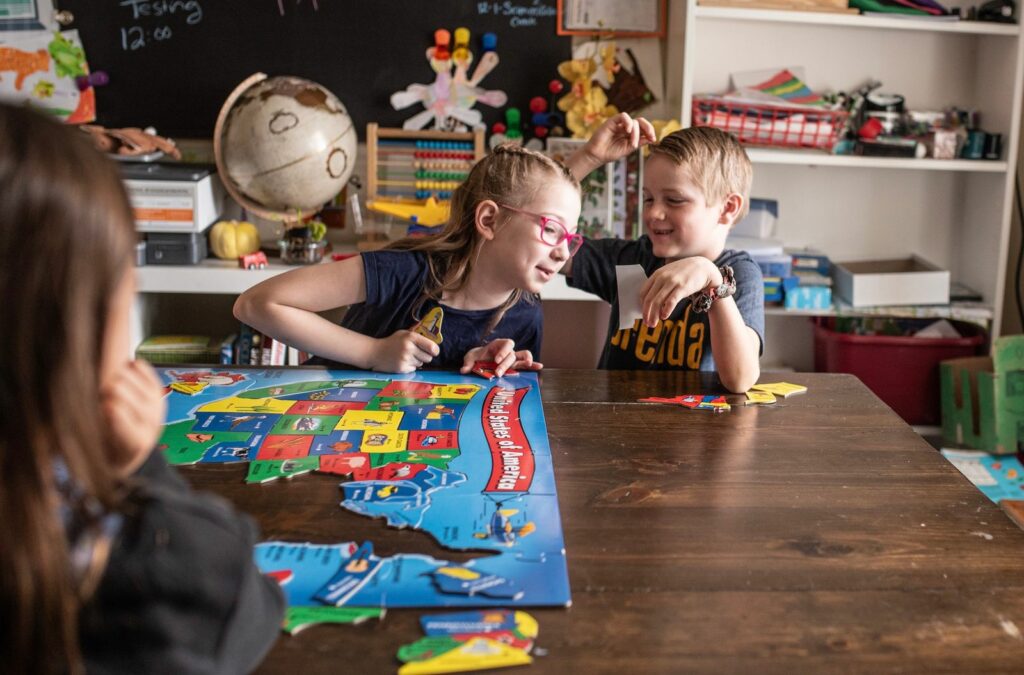
When I was a second-grade teacher, I taught two classes, each with 25 students. So a total of fifty students! That’s fifty students that I needed to grow in all subject areas.
We, as teachers, know teaching is much more than presenting information and lessons in each content area.
In today’s classroom, you must teach, assess, re-teach, re-assess, pull small groups, plan, grade, communicate with parents, attend staff meetings … oh yeah, and connect with your students!
Connecting with your students should be priority numero uno, but it’s challenging to make it a priority or a reality with so many students and responsibilities.
Classes NEED to be smaller for teachers and students to feel successful, connect, and grow.
Why?
Because of the benefits.
Let’s talk about just 3 of the major benefits of small class sizes.
Benefit #1: Small class sizes allow teachers to make deeper connections with students.
When I ran my microschool, I had a class size of 10 kids or less at all times.
This was a game changer when building relationships with my students. I could learn each child’s heart, what makes them tick, what motivates them, and how they learn.
Because we had strong relationships, my students were more willing to take risks and be vulnerable. This led to the creation of some of their most amazing work.
I had multiple students who didn’t want to leave at the end of every day. Talk about a totally different experience than my days in a traditional school setting.
Seeing my students’ desire to be a part of their learning community in this way was so fulfilling.
Benefit #2: Small class sizes allow teachers to better support students who may need extra time & attention.
A second-grader in my microschool needed me to sit beside her while she worked through her online language tool.
I didn’t even help her most of the time, but she just liked knowing I was there. I saw her confidence as a learner continue to grow in these moments. I was able to support her in the way that she needed because of my small class.
All students are not created equal, and that’s okay!
Some pick up a new skill like they’ve been doing it their whole lives, and some need tons of exposure, extra practice, and even extra support from an adult.
When teachers have fewer students in their classrooms, they get to focus on those students who may, otherwise, fall through the cracks. These same students may fall behind in a bigger class setting.
This extra support gives students individualized attention and leads to higher academic outcomes.
Benefit #3: Small class sizes usually equal happier teachers. And happier teachers stay longer and work harder.
A big reason I left my traditional school was because of the overwhelming caseload of students I taught.
I didn’t feel like it was possible, and I was constantly stressed. This is a reality for most teachers today.
Whether it’s behavioral, mental health or just academic, more and more students come into today’s classroom with a range of needs. There are often more needs than the teacher can handle. It can leave them feeling overwhelmed and powerless.
With smaller class sizes, teachers won’t feel overwhelmed because there will be enough of them to support these students’ needs. They’ll feel happier, more productive, and more fulfilled when less stressed.
Teacher-student relationships are super important. Students also need to feel successful and supported personally and academically.
If they are in a small class, they have a better chance of getting the attention and environment needed to thrive as a learner!
Source: Prenda



